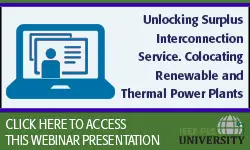-
Members: FreePES
IEEE Members: $11.00
Non-members: $15.00Pages/Slides: 47
Webinar
17 Nov 2022
Many countries have set a goal to achieve 100% clean energy by 2035. This will require integration of a large amount of intermittent renewable generation resources at all levels. To cope with the increasing operational variability and uncertainty on the generation side, new modeling methods and control technologies to better manage load side resources are needed. In this talk, I will first introduce the load modeling principles, which include the modeling of individual and aggregated loads. Then, I will discuss a few basic load control mechanisms including a summary of existing load control design considerations and a few examples of futuristic control schemes, where active customer participation and high control accuracy are expected. Next, I will briefly talk about how to provide incentives to demand side resources under the existing rate structure and its pros and cons. Issues in non-descriptive reward allocation mechanisms are discussed and a few examples are given to illustrate potential solutions. The presentation will be concluded by a brief summary of the presentation and an outlook of challenges and issues we may need to face in transition to a net zero carbon future.
Chairs:
Committee Chair (if available)


